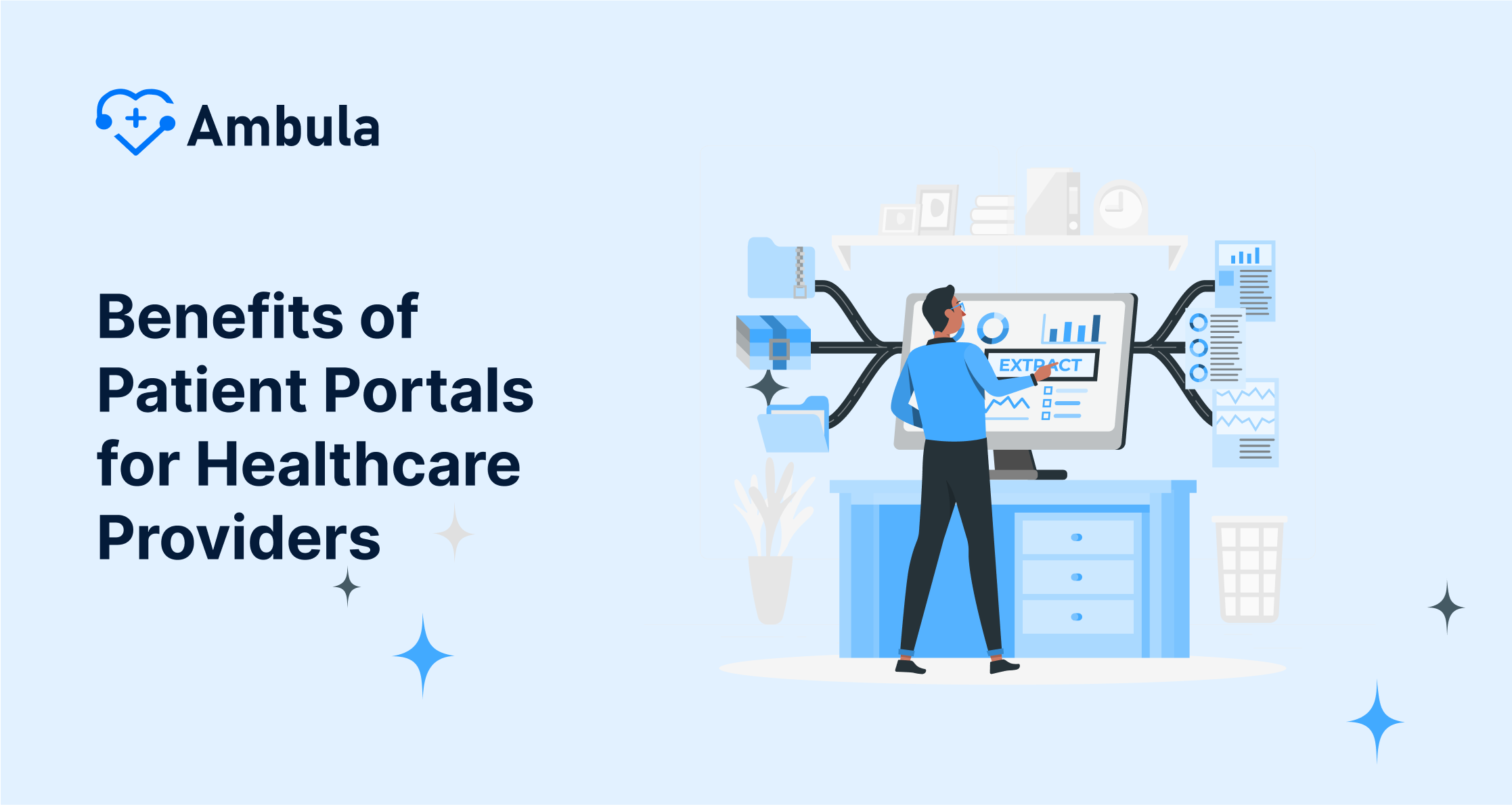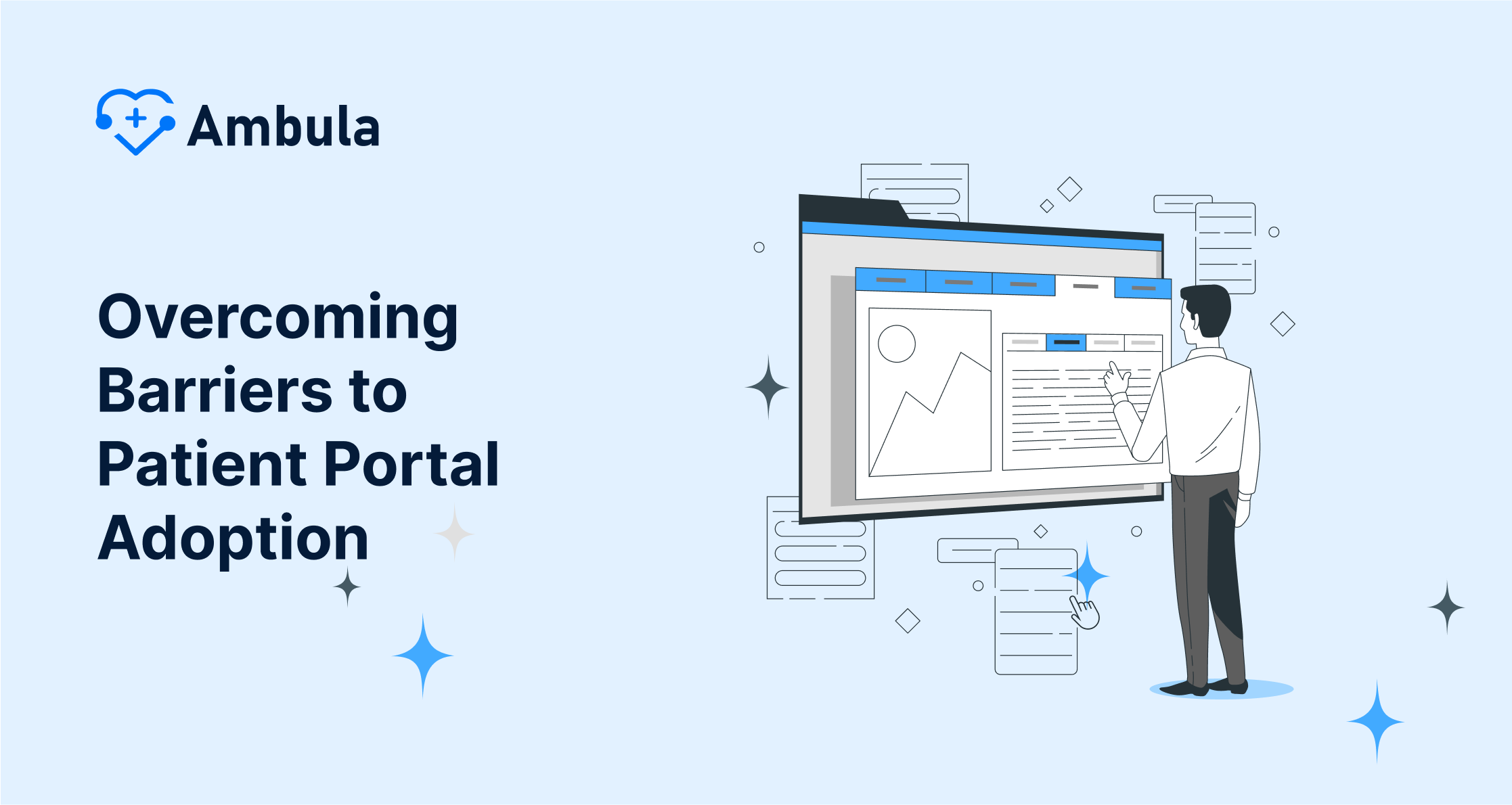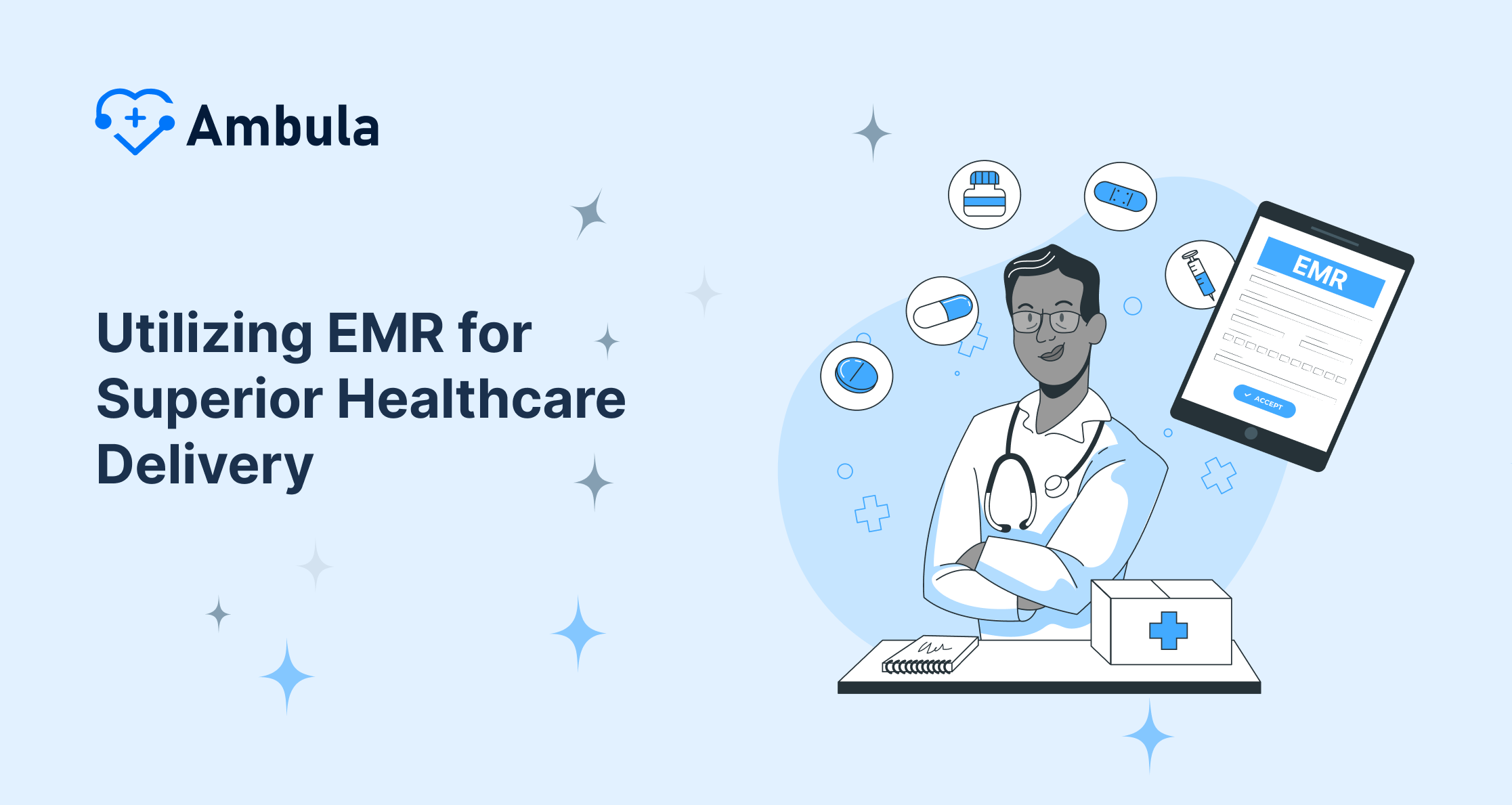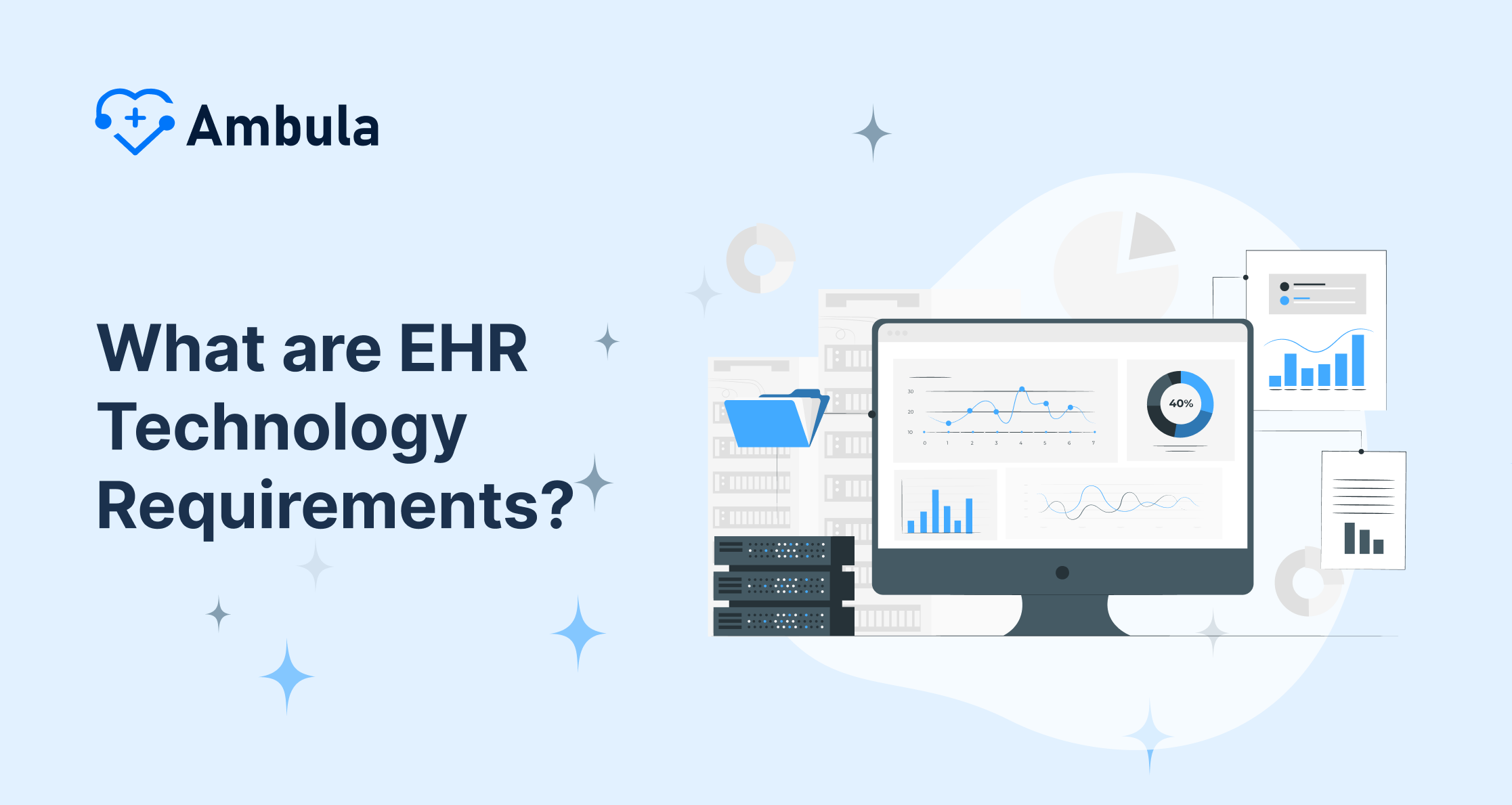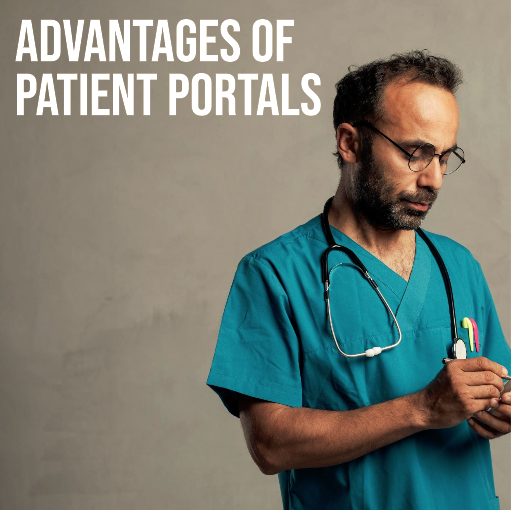
Patient portals are secure online websites or apps that give patients access to medical records, test results, and other health-related information. They can also schedule appointments, request prescription refills, and communicate with healthcare providers.
Patient portals offer several advantages for both patients and healthcare professionals. Patients can provide convenient access to their health information, improve communication with their providers, and increase their engagement in their healthcare. For healthcare professionals, patient portals can streamline administrative tasks, improve patient engagement and communication, and better coordinate care.
According to a 2023 HIMSS Analytics survey, 90% of healthcare organizations offer a patient portal. However, only 63% of patients say they have used a patient portal in the past year. This suggests that there is still significant room for growth in adopting and using patient portals.
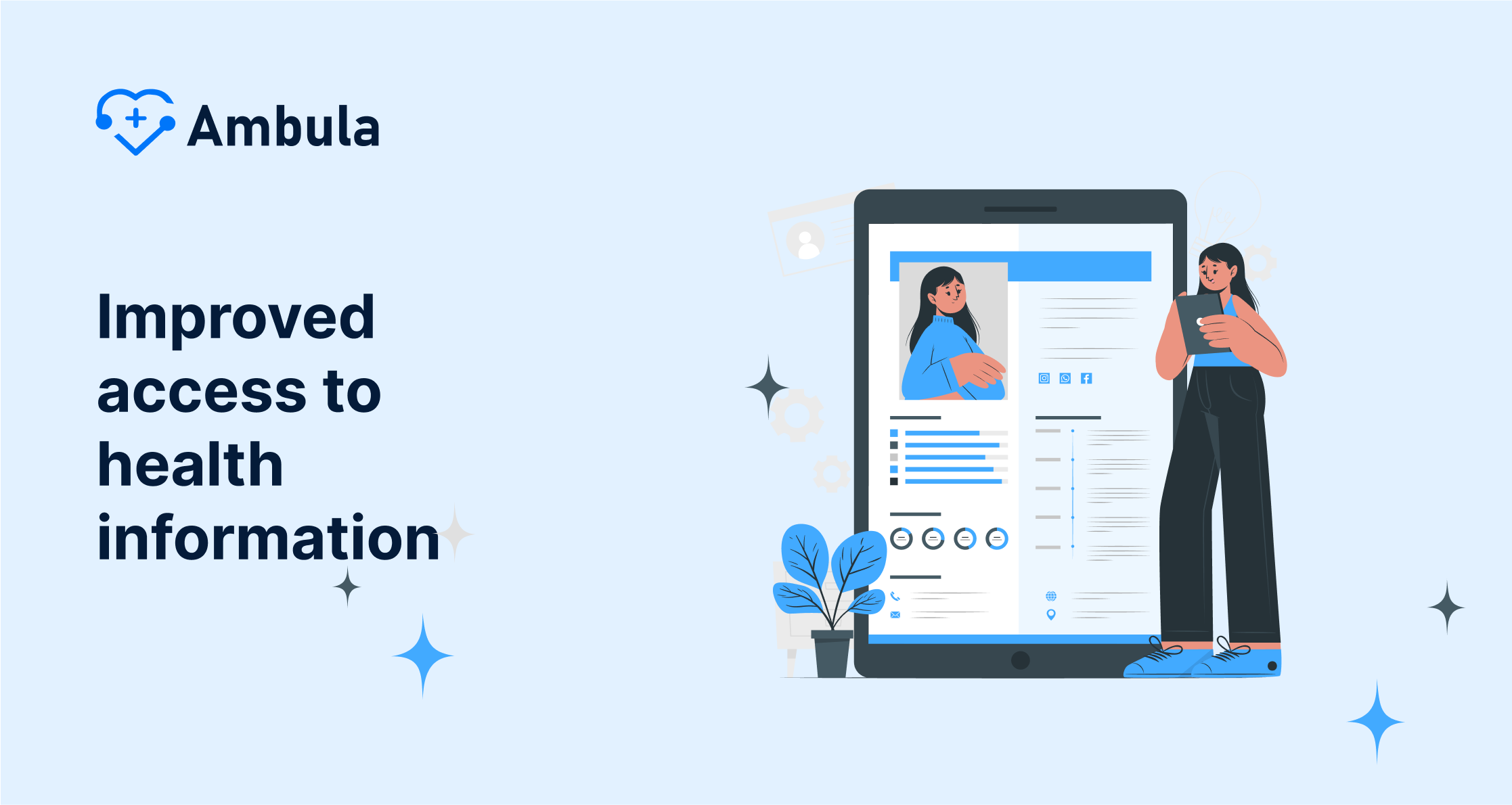
Improved access to health information
Patient portals give you secure access to your electronic health record (EHR) 24/7 from anywhere with an internet connection. You can view your medical history, including lab results, imaging reports, and medication lists, at your convenience. You can also download and share your EHR with other healthcare providers, such as specialists or urgent care clinics.
Improved access to health information can lead to several benefits, including:
- Better understanding of your health: With easy access to your medical records, you can better understand your health history, identify potential risks, and make informed decisions about your care.
- More effective communication with your provider: By reviewing your medical records before and after appointments, you can be better prepared to discuss your health with your provider. This can lead to more effective communication and improved care coordination.
- Increased patient engagement: Patient portals can help you become more engaged in healthcare. By having access to your medical records and communicating directly with your provider, you can take a more active role in managing your health.
For example, if you are scheduled to see a specialist for the first time, you can use your patient portal to review your medical history before the appointment. This will help you identify any questions or concerns you have, and it will also help the specialist understand your health needs.
Or, if you are taking a new medication, you can use your patient portal to read about the medication’s side effects and interactions. This information can help you stay safe and healthy while taking the medication.
Patient portals can also help manage chronic conditions. For example, if you have diabetes, you can use your patient portal to track your blood sugar levels and share them with your doctor. This information can help your doctor adjust your treatment plan as needed.
Benefits of Patient Portals for Healthcare Providers
Patient portals offer several benefits for healthcare providers, including streamlined administrative tasks, improved patient engagement and communication, and better care coordination.
Streamlined administrative tasks
Patient portals can automate many time-consuming administrative tasks, such as scheduling appointments, processing prescription refills, and answering patient questions. This can free up staff to focus on more important tasks, such as providing patient care.
For example, a patient can use the portal to schedule their appointment rather than having to call the office and wait on hold. The portal can also process prescription refills automatically so that patients don’t have to call or come into the office to request them.
Improved patient engagement and communication
Patient portals make it easy for patients to communicate with their providers and access their health information. This can lead to improved patient engagement and satisfaction.
Patients can use the portal to ask questions about their health conditions, request appointments, and refill prescriptions. They can also view their medical records, test results, and immunization records. This can help patients to understand their health better and make informed decisions about their care.
For example, patients can use the portal to learn more about a new medication they are prescribed or ask their doctor about a test result. The portal can also share health information with family members or caregivers.
Stats:
- A 2020 Office of the National Coordinator for Health Information Technology survey found that 52% of patients who used a patient portal reported feeling more engaged in their healthcare.
- A 2021 study published in the journal Patient Education and Counseling found that patients who used a patient portal were more likely to have better blood sugar control than patients who did not use a patient portal.
- A 2022 study published in the journal JMIR Medical Informatics found that patients who used a patient portal to communicate with their healthcare provider were more satisfied with their care than patients who did not use a patient portal to communicate with their healthcare provider.
Overcoming Barriers to Patient Portal Adoption
Introduction to Barriers
- Context: Despite the clear benefits of patient portals, their adoption faces several barriers. Understanding and addressing these challenges is crucial for healthcare providers to maximize the potential of patient portals.
- Common Barriers: These barriers can range from technological challenges and lack of awareness to resistance to change among both patients and healthcare providers.
Technological Challenges and Solutions
- Digital Divide: A significant barrier is the digital divide, where some patients may lack access to the necessary technology or internet connectivity. This is particularly prevalent among older adults, low-income families, and rural populations.
- Solution: To overcome this, healthcare providers can offer alternative access methods, such as providing computer stations in their offices or collaborating with community centers to facilitate access.
- Usability Issues: Another issue is the complexity and user-unfriendliness of some patient portals.
- Solution: Designing portals with intuitive interfaces and providing training or tutorials can help make them more accessible to all users, regardless of their tech-savviness.
Awareness and Education
- Lack of Awareness: Many patients are not aware of the existence or benefits of patient portals.
- Solution: Healthcare providers can implement educational campaigns using brochures and website information during visits to inform patients about the portal and its benefits.
- Training and Support: Some patients may be aware of patient portals but unsure how to use them effectively.
- Solution: Offering training sessions, creating easy-to-understand user guides, and providing ongoing support can encourage more patients to use these tools.
Cultural and Language Barriers
- Diverse Patient Populations: Patients from different cultural backgrounds or those who speak different languages may find it challenging to use patient portals that are not tailored to their needs.
- Solution: Providing multilingual support and culturally sensitive materials can make patient portals more inclusive.
Privacy and Security Concerns
- Concerns About Data Security: Patients often express concerns about the privacy and security of their health information online.
- Solution: Educating patients about the security measures in place, such as encryption and secure login processes, can alleviate these fears. Regularly updating and auditing security protocols is also essential.
Better coordination of care
Patient portals can share information between healthcare providers, such as doctors, nurses, and specialists. This can help improve care coordination and ensure that patients receive the best possible treatment.
For example, a patient’s specialist can use the portal to share their test results and recommendations with their primary care doctor. The portal can also be used to schedule appointments with different providers and to coordinate referrals.
Overall, patient portals offer several benefits for healthcare providers. By streamlining administrative tasks, improving patient engagement and communication, and enabling better coordination of care, patient portals can help healthcare providers improve the quality of care they provide and improve the patient experience.
Examples of Common Patient Portal Features
Patient portals offer a variety of features that can help patients manage their healthcare more effectively. Some of the most common patient portal features include:
- Access to medical records: Patients can view their medical records, including test results, immunizations, and medication lists. This information can help patients to better understand their health and make informed decisions about their care.
- Secure messaging with healthcare providers: Patients can send and receive messages with their healthcare providers through the patient portal. This can be a convenient way to ask questions, request appointments, and refill prescriptions.
- Appointment scheduling: Patients can schedule appointments online through the patient portal. This can save time and hassle, and it can also help patients to stay on top of their preventive care.
- Prescription refill requests: Patients can request prescription refills online through the patient portal. This can save time and hassle, and it can also help patients to avoid running out of their medications.
- Test result viewing: Patients can view their test results online through the patient portal. This can help patients to stay informed about their health and to track their progress over time.
- Educational resources: Patient portals often offer educational resources about health conditions, treatments, and preventive care. This information can help patients to better understand their health and make informed decisions about their care.
- Payment processing: Patients can often pay their medical bills online through the patient portal. This can be a convenient way to pay bills and keep track of payments.
How to Choose a Patient Portal
When choosing a patient portal for your practice, you should consider a few things. First, consider the features that are important to you and your patients. Some common patient portal features include access to medical records, secure messaging, appointment scheduling, prescription refill requests, test result viewing, educational resources, and payment processing.
Next, consider how the patient portal will integrate with your electronic health record (EHR) system. It is important to ensure that patient information is synchronized across all systems, making it easier for you and your staff to manage patient care.
You should also consider the ease of use of the patient portal. The portal should be intuitive and user-friendly, with clear instructions and navigation. Additionally, the patient portal should be secure and use industry-standard security measures to protect patient data.
Finally, consider the cost of the patient portal. Some patient portals have upfront and ongoing costs, while others have additional fees for features or services. It is important to choose a patient portal that fits your budget and needs.
Once you have considered all of these factors, you can start to narrow down your choices. You can read reviews of different patient portals online or ask other healthcare providers for recommendations. Once you have chosen a few portals that meet your needs, you can request a free trial or demo to see how they work in practice.
Here are some additional tips for choosing a patient portal:
- Make sure the patient portal is mobile-friendly. More and more patients are using their smartphones and tablets to access healthcare information, so choosing a portal optimized for mobile devices is important.
- Consider the needs of your patient population. If you have a large population of elderly patients, you may want to choose a portal with larger fonts and simpler navigation.
- Get feedback from your staff. Ask your staff what features they want to see in a patient portal and what would make their jobs easier.
What Are Popular Patient Portals?
Here are some of the popular patient portals, according to KLAS Research:
Epic (MyChart)
With an overall score of 89.1, MyChart is the top-ranked patient portal according to KLAS. It offers a wide range of features, including the ability to view medical records, schedule appointments, send messages to providers, and refill prescriptions.
Athenahealth (AthenaCommunicator)
AthenaCommunicator comes in at a close second with a score of 84.6. It is known for its ease of use and its ability to integrate with a variety of other healthcare IT systems.
Greenway Health (Greenway Patient Portal)
Greenway Patient Portal has a score of 77.9 and is praised for its mobile app and its ability to support multiple languages.
NextGen Healthcare (Medfusion Patient Portal)
Medfusion Patient Portal rounds out the top five with a score of 58.1. It is a good option for patients who are looking for a basic and affordable patient portal.
How to Get the Most Out of Patient Portals
Choosing the right patient portal for your practice can improve patient engagement, streamline administrative tasks, and provide better patient care.
Patient portals offer several benefits for both healthcare providers and patients. To get the most out of patient portals, healthcare professionals should promote their use to patients, make it easy for patients to sign up, encourage patients to use them to communicate with providers, use them to share information with patients, and integrate them with EHR systems.
Patients can also get the most out of patient portals by signing up for one, updating their profile regularly, using it to access their health information, using it to communicate with their providers, and sharing their account information with their caregivers.
By following these tips, healthcare professionals and patients can get the most out of patient portals.
Conclusion
Patient portals are a valuable tool for both healthcare professionals and patients. By providing patients with convenient access to their health information, improving communication with providers, and increasing engagement in healthcare, patient portals can help to improve the quality of care patients receive.
Healthcare professionals can also benefit from patient portals by streamlining administrative tasks, improving patient engagement, and better-coordinating care. By promoting the use of patient portals and making it easy for patients to sign up, healthcare professionals can help to ensure that all patients can reap the benefits of this technology.
Patient portals are a key part of the future of healthcare. By providing patients with more control over their healthcare and by making it easier for providers to deliver care, patient portals are helping to create a more patient-centered and efficient healthcare system.

